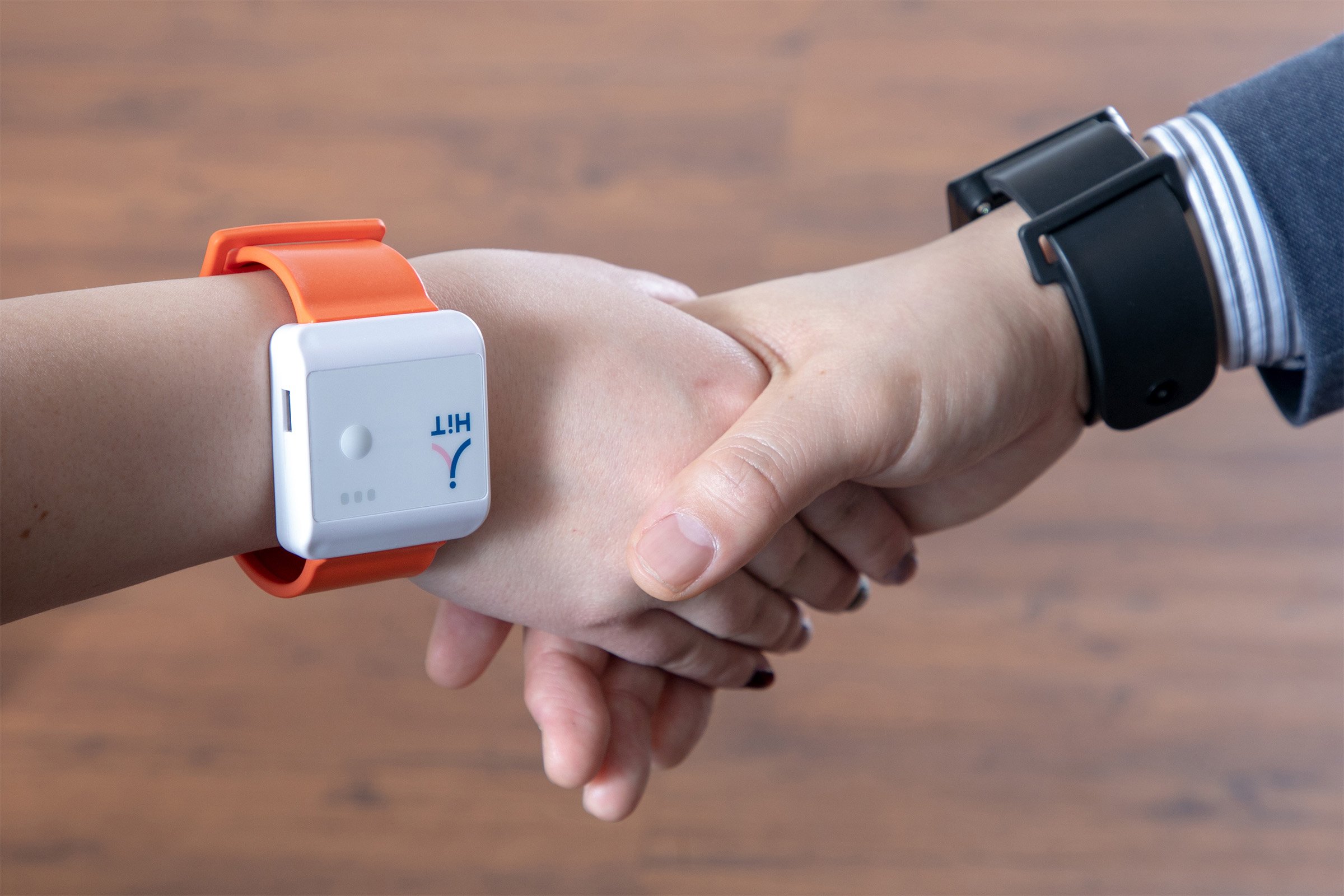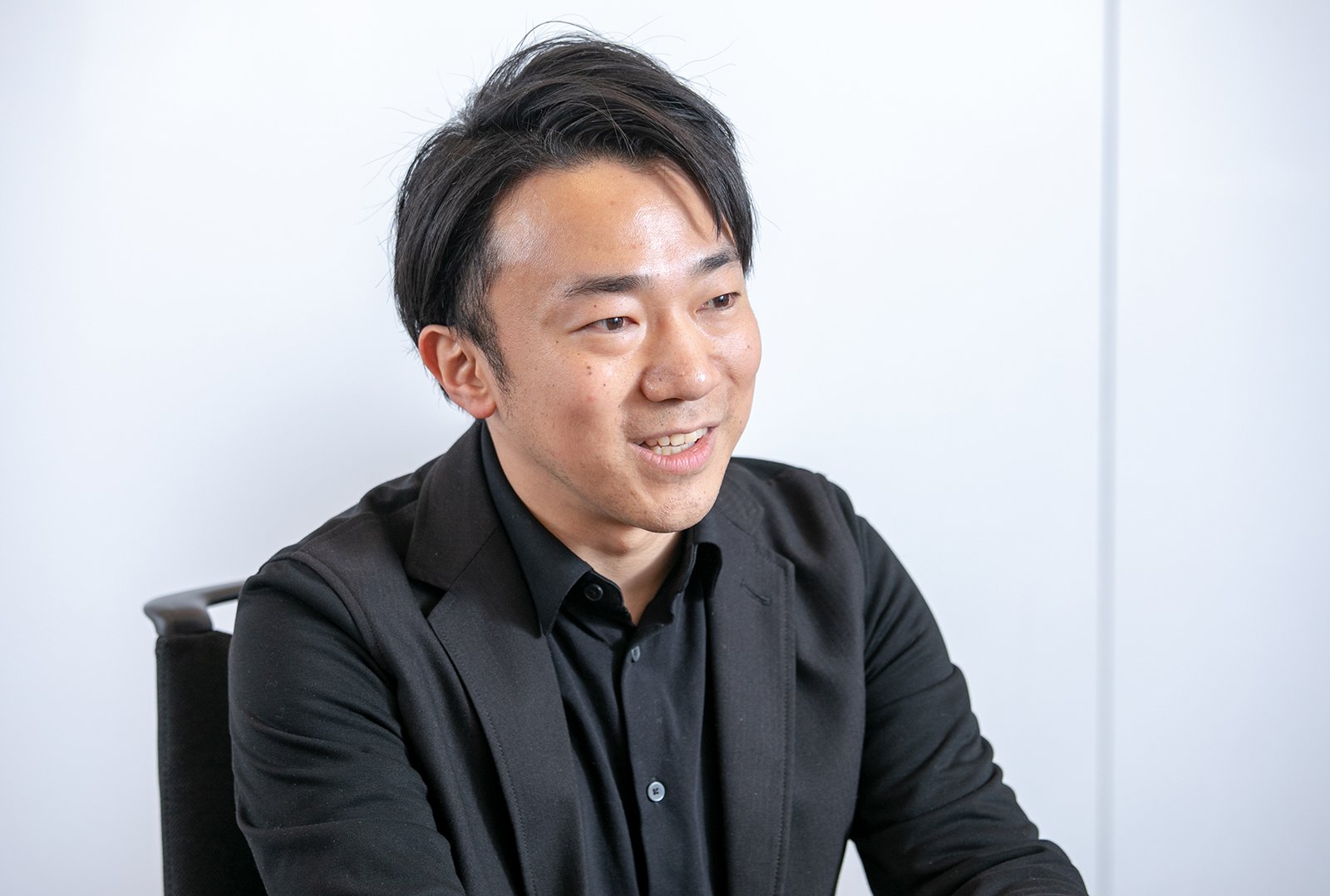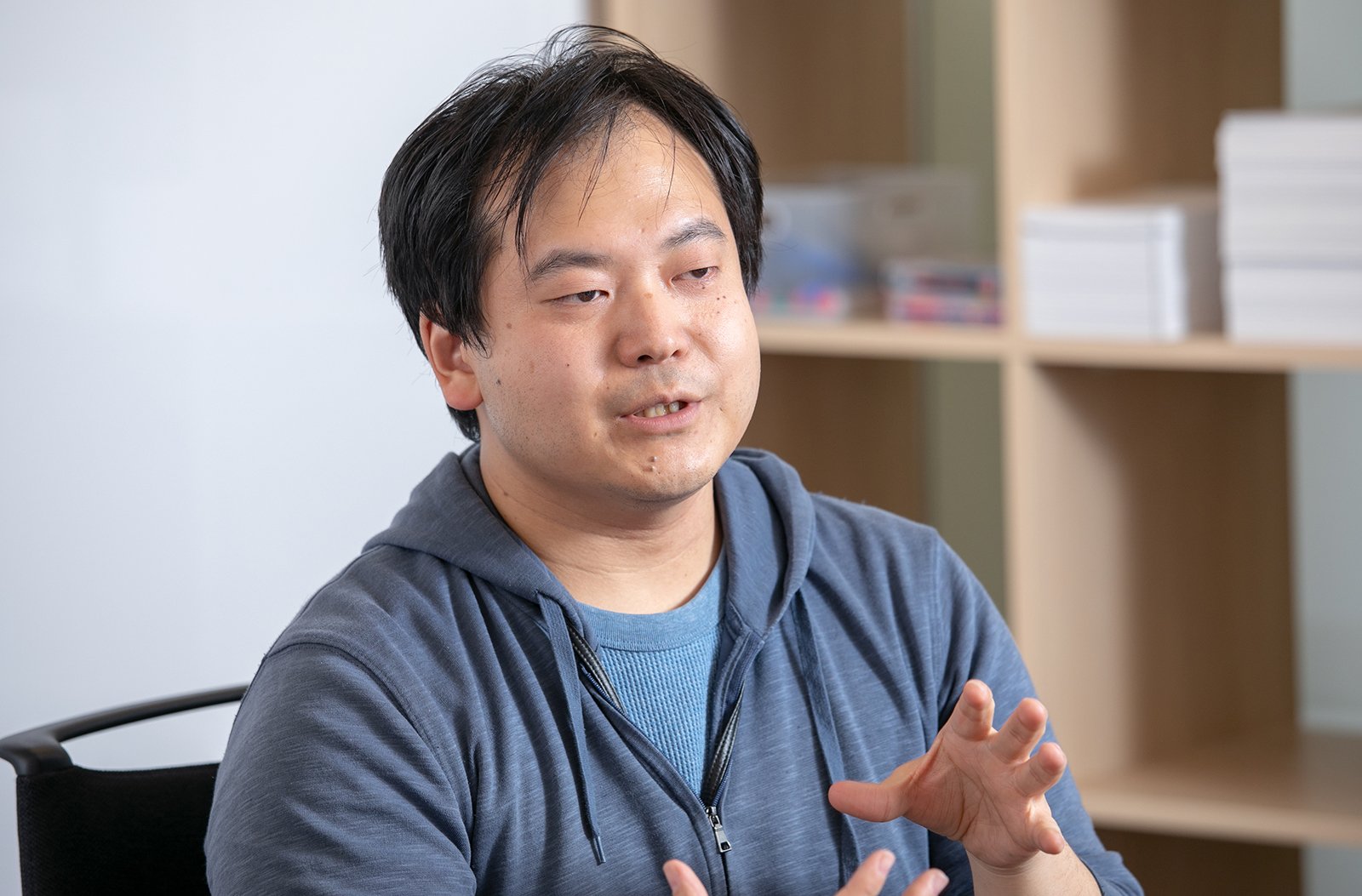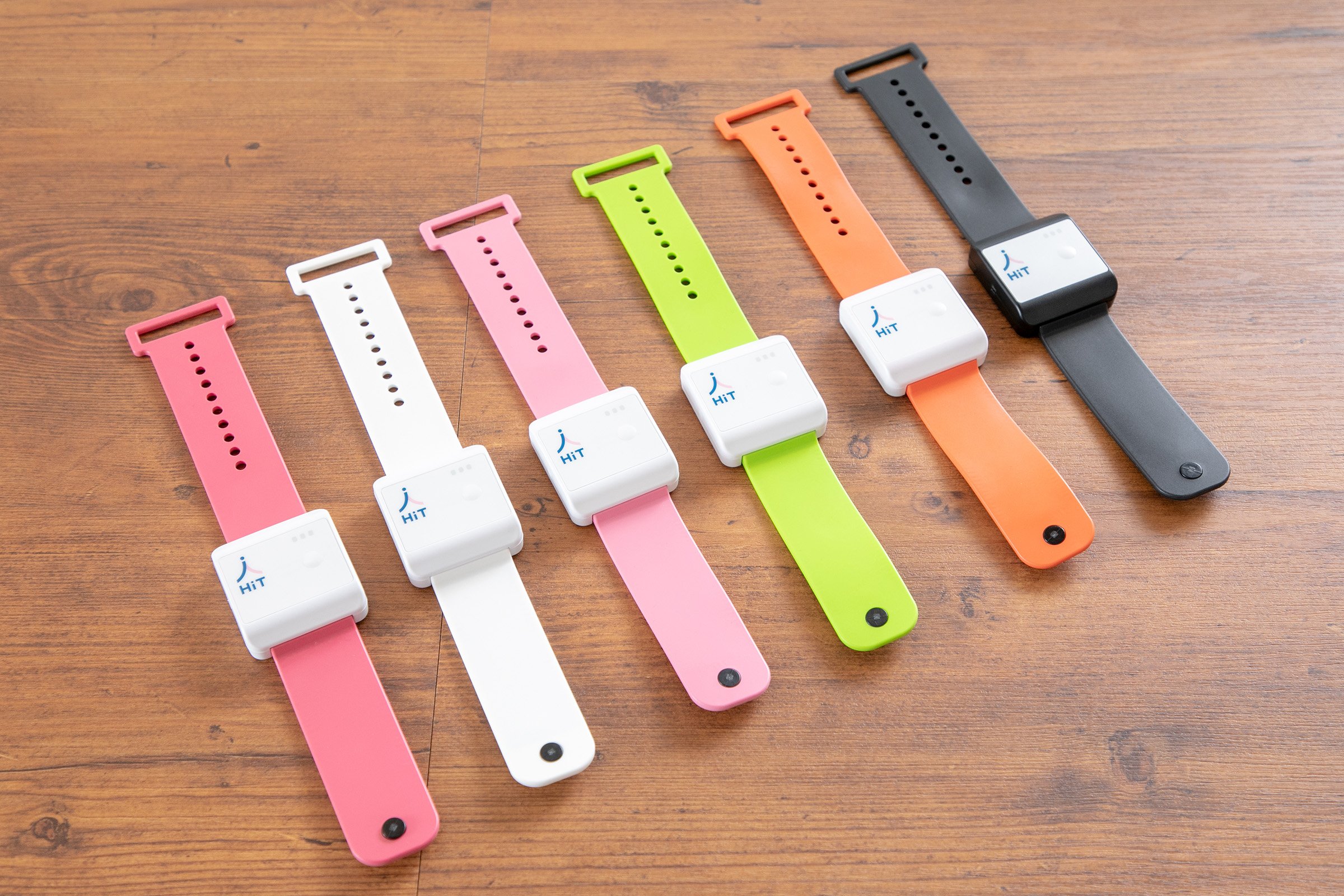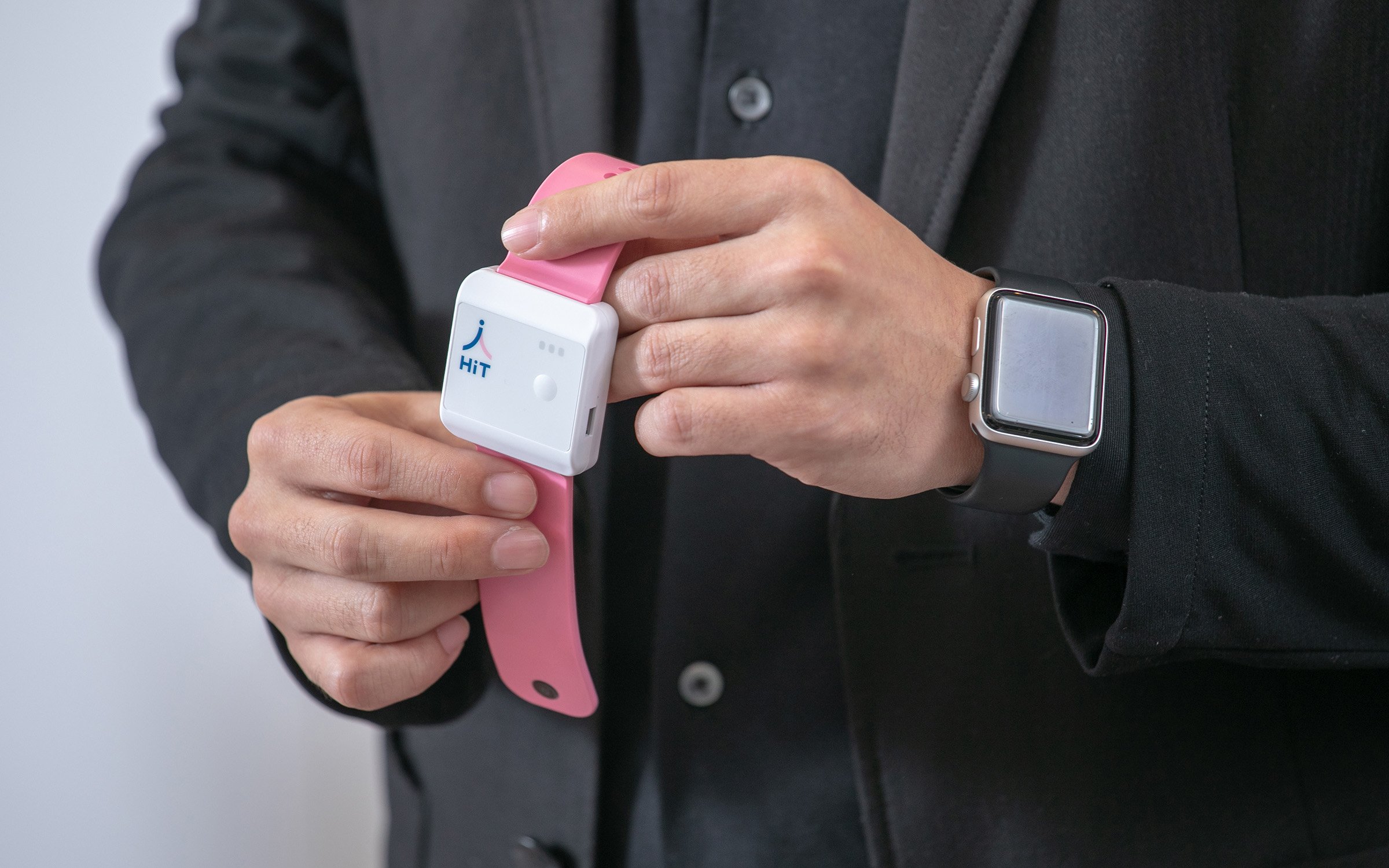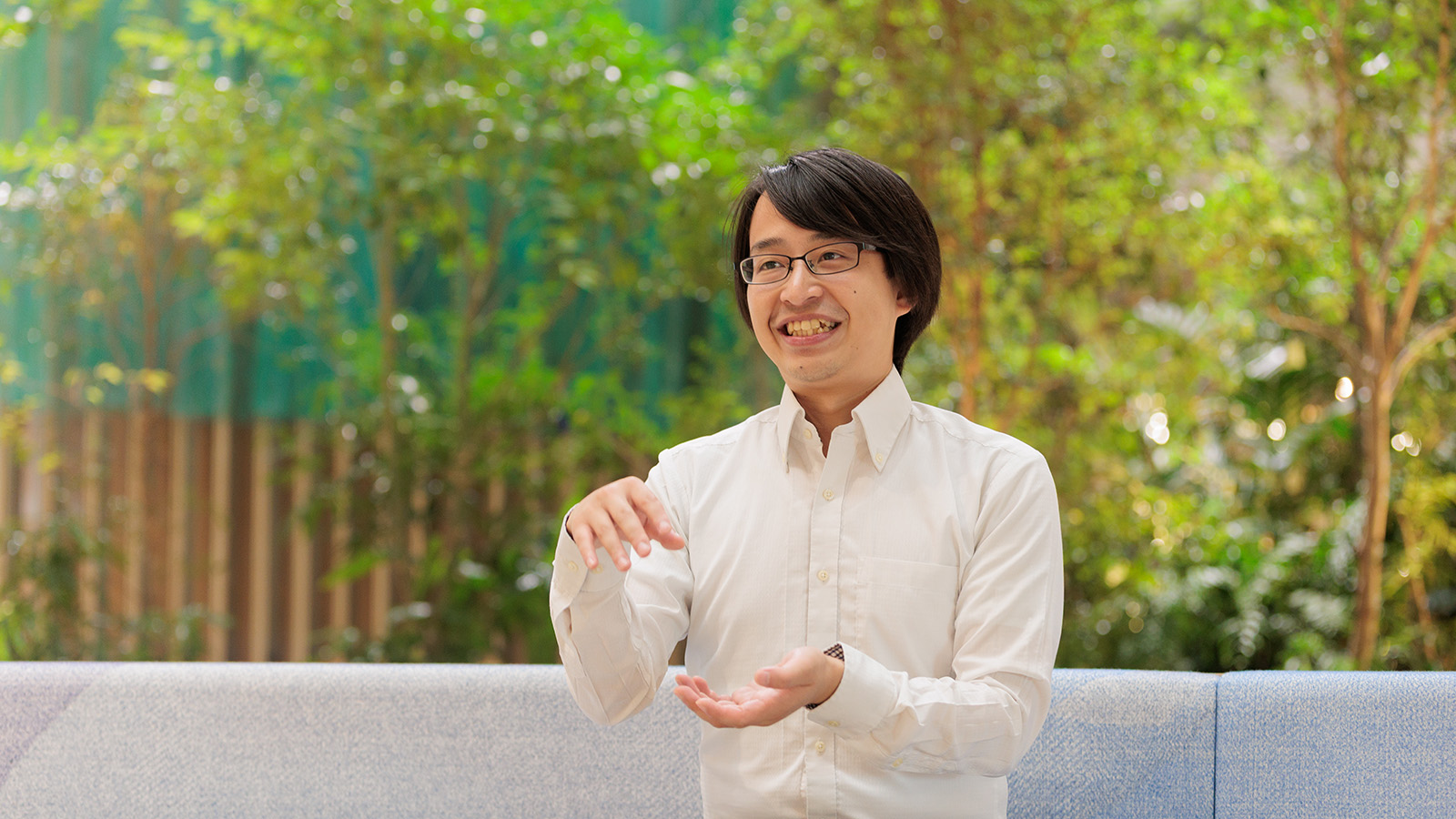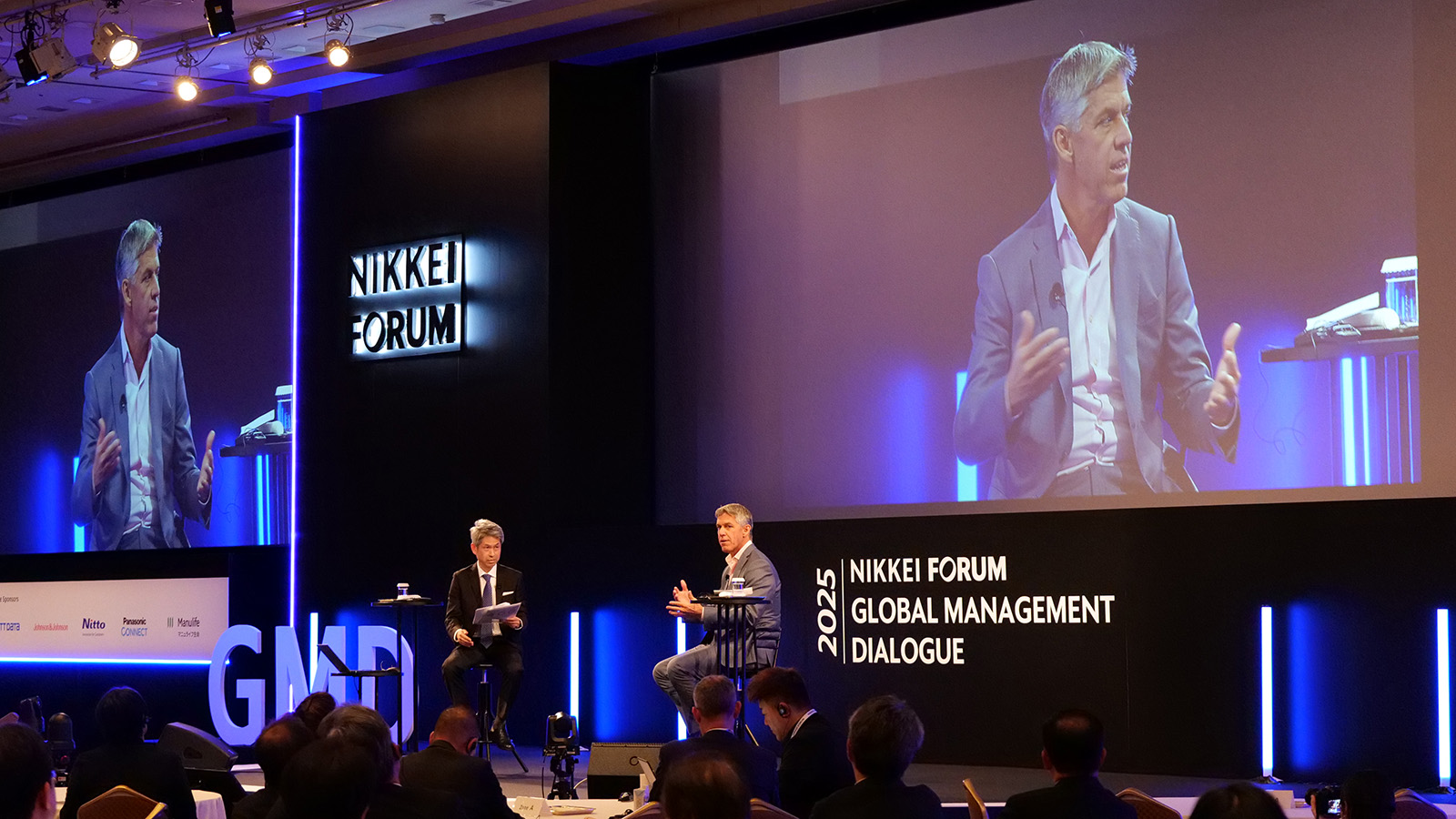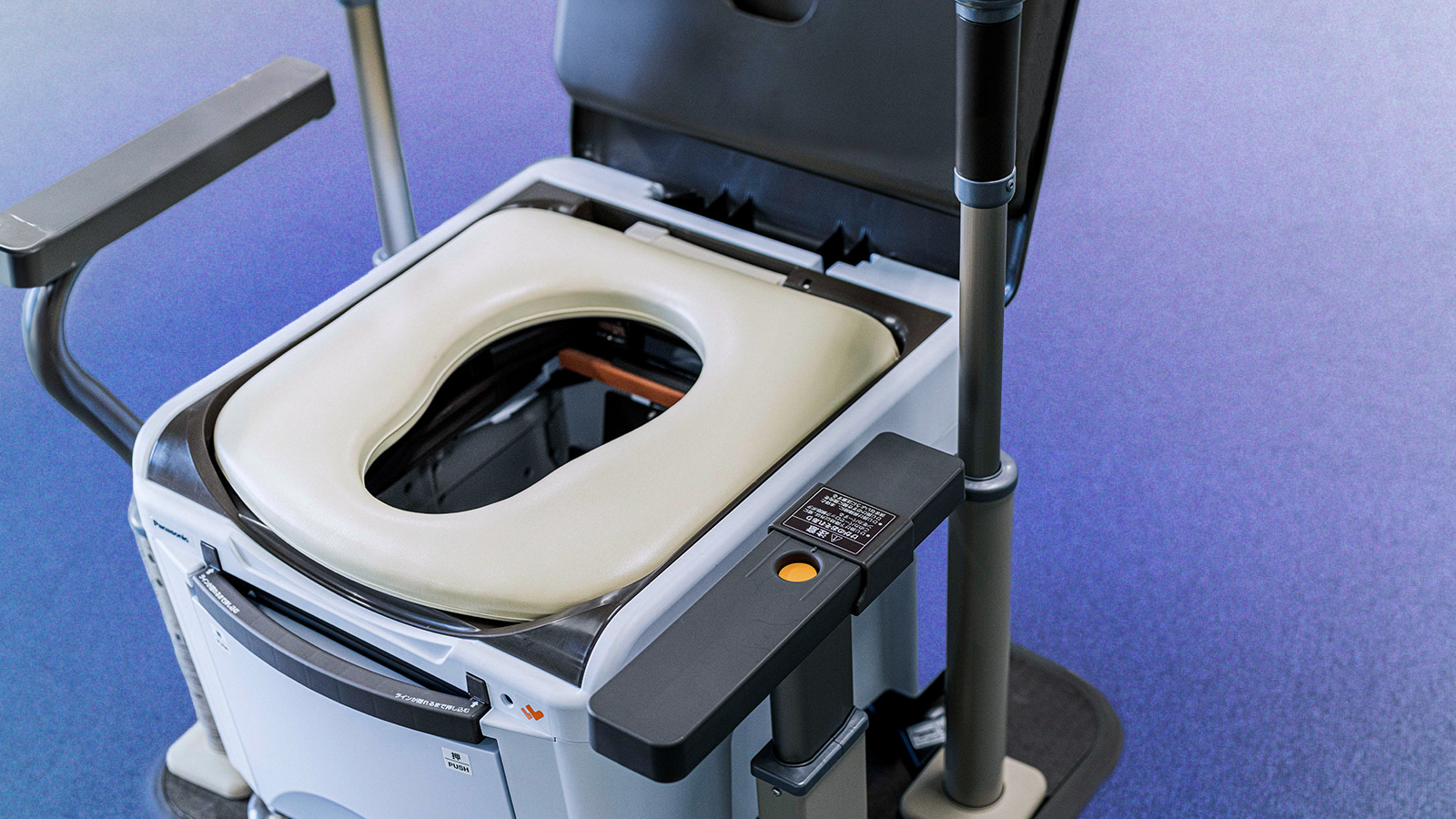
HiT, is a service based on the technology that Panasonic provided. It is an information exchange service that uses an electric field around the human body as the media for information transmission. It sounds like a sci-fi movie, but it is in the spotlight of public attention as a popular service in matchmaking parties in Japan. We asked the people who have been involved in its development at Panasonic, startup studio Quantum, and the partner company ZWEI about human body communication technology and the future potential of HiT.
Summary
- HiT was born as a new communication tool utilizing human body communication, which Panasonic has been researching for many years.
- It transmits information in a weak electric field around people. Currently, it is popular in matchmaking parties in Japan as the first application of the technology.
- This ideal co-creation became possible by the combination of passion for open innovation, high technical ability to support it, flexible thinking, and quick decision-making capabilities.
The technology and matchmaking were a great match and became a sensation.
Japan is an aging society, and the population continues to decline. As evidence of this, the number of marriages has also been on a trend of decline. According to a report based on the Vital Statistics of the Ministry of Health, Labor and Welfare, the number of marriages in Japan in 2018 was 586,481 couples, which is the lowest ever, and the marriage rate (the number of marriages per 1,000 people) was only 4.7%. That is about half of what it was compared to 50 years ago, in the first half of the 1970s.
*Reference: Overview of Ministry of Health, Labor and Welfare 2018 Vital Statistics (confirmed numbers)
https://www.mhlw.go.jp/toukei/saikin/hw/jinkou/kakutei18/dl/00_all.pdf (In Japanese)
Despite the recent decline in marriages, services for connecting men and women, such as matchmaking events and apps, are on the rise. Needless to say, there are many men and women who are eager to get married and looking for opportunities to meet their mates, so the demand for supporting services will not disappear. However, "how well you take that first step" is a challenge in any era.
Human communication has traditionally been based in conversations, but what happens if you change your first contact to a handshake when people meet for the first time at a matchmaking event? And what if the moment you shook hands a tablet instantly displayed basic profiles and questions that you wouldn't dare to ask?
Panasonic, Quantum, and ZWEI jointly have been holding such futuristic smart matchmaking parties regularly. They use a technique called human body communication that helps bridge communication in a way that is more like telepathy than words. These parties are extremely popular. At a recent event in Satte City in Saitama Prefecture, 13 out of 17 pairs became couples. That translates into a matchmaking rate of 76%. This is an amazing number, considering that 50% had been regarded as a high success rate.
This service is called HiT. So how did this service become engaged with matchmaking services? Let's find out the behind-the-scenes story and learn about the future prospects for HiT from the people involved in its development.
The source of this flexible idea is "trusting through the human body"
Panasonic has been researching about human body communication since the early 2000s, back in the time when the company's name was Matsushita Electric Works. HiT uses the electric field communication method, creating an electric field, a subtle electric layer around the human body. When the proprietary wristband type devices are worn around each person's wrist, electric fields are generated. These fields connect and can be used to exchange information. The advantage is that this communication is possible even when the electrode and the human body are insulated from each other. Technically, there is another similar method, the electric current communication method, but it requires an electrode to be in physical contact with the body, and there are many cases in which communication would not be possible--for example, if rubber gloves are worn.
"To explain it in a way that's easy to understand, electric field communication is almost like communicating through someone's aura. For the past ten years, Panasonic has been exploring ways to use this technology for industrial applications. One example would be in the automobile industry, to make it possible to complete personal identification and start the engine by simply squeezing the steering wheel. However, we needed to meet two requirements from customers: the communication needs to be 100% reliable and we also need to have a track record in the market. That 100% reliability is quite a challenge for development, and we thought it would take some time to accomplish that. So we reconsidered applying this technology that was being brushed up for the automobile industry in the B2C market. That's how HiT was born," said Ryo Yamada, one of the creators of HiT.
Mr. Yamada joined Panasonic in April 2018 after working for Lenovo and Microsoft. At Microsoft, he worked on many projects related to digital transformation. He notes, "I have always been in the field of changing the game, not just in open innovation like this time."
However, the idea did not come down to him easily. Back in 2016, Panasonic demonstrated human body communication technology as one of the important future technologies at CEATEC JAPAN 2016. The display of decorative lights on the skirt of a spokesperson sparkled when people shook hands attracted a great deal of attention. Quantum was the company that supported this effort. Quantum was established in 2016 as a spin-off from a division of TBWA Hakuhodo. It called itself a startup studio and was made up of professionals that included engineers, designers, and strategic consultants.
Quantum's Toshiyuki Shiwa recalls, "To develop a B2C business, we needed an idea that was beyond just seeking reliability. So we made a daring proposal to explore the value proposition in human-to-human communications that could work with the current reliability level of human body communication. We thought about ideas to support communication between people, using the human body to deliver reliable information." When Mr. Yamada heard about this, he felt like his eyes were suddenly opened.
"That point of view was missing from me. We tend to be technology driven, but Quantum started from the consumer's perspective," explains Mr. Yamada. "From there, we quickly developed the idea to aim the matchmaking industry."
The Industrial Solutions Company, part of the Panasonic Group, to which Mr. Yamada belongs has a mission to respond to the needs of B2B customers especially with "solutions centered on powerful devices," and has been known as a company that focuses on cutting-edge technology and high-quality manufacturing as its competitive strengths. Mr. Yamada confirms that "We were quite satisfied with our technology and quality, but it was not easy to change our mindset. Our focus was to sell products, but we had to change our business model to shift to the service-oriented sales of 'events.' For that reason, we reconsidered the value chain from R&D to sales from the customer's perspective. Fortunately, our executives also showed a strong interest in changing the way of doing business, so we got company-level support for valuable co-creation. Above all, I was moved by the challenge spirit of the project members."
Providing a new style of communication
As the first step, they focused on the matchmaking industry in September 2018. Yudai Tanabe of ZWEI welcomed the proposal from the two companies.
Mr. Tanabe notes, "Our core business is matchmaking utilizing a database and the marriage support services from marriage consultants. We also hold party events to provide opportunities for people to meet for our 28,000 members (as of the end of February 2019). As more and more matchmaking parties and easy apps for matchmaking have been appearing in the market recently, we were looking for new ways and new technology to make our matchmaking services more competitive. As such, this proposal came at a good time for us. Above all, I had a gut sense that this is interesting. So our three companies started working together, exploring ways to put these ideas into practice."
The companies started trials in February 2019 and have been taking steps to commercialize their efforts by examining the survey responses from participants before and after each event. Mr. Tanabe remembers, "I was most worried about how people would feel about body contact in shaking hands, but we found that both men and women did not mind. In addition, the matchmaking rate during the trial period increased to 63%, which is higher than usual." This gave the companies confidence, and ZWEI made the decision to introduce the service.
Quantum functions as the renter of the system. "I was relieved that ZWEI made the decision to turn it into a paid service so quickly," recalls Mr. Shiwa. "Otherwise, this service might not have materialized yet." Currently, they are holding a party with HiT once a week, and they have experiencing amazing matchmaking rates as mentioned earlier.
At a typical matchmaking party, people fill out their profiles on a form and read each other's profiles at the "nice to meet you" stage. Participants have to repeat this process for each encounter, wasting a lot of time in the limited time at a party. With HiT, the profiles are displayed on a tablet in front of each pair of people from the moment they shake hands. Touching a part of each other's body and looking at the same screen together gives participants a sense of closeness and makes it easier to start a conversation.
Mr. Tanabe explains, "In a way, it also helps with time efficiency. What's even more effective is that there's no need to drop your eyes to a piece of paper. With handwritten profile sheets, people naturally look down. With HiT, they start from a handshake and then look together at a shared screen. We could say that this provides a new style of communication."
Mr. Yamada agrees, "It was effective to change up the meeting process to include touching and sharing a screen. We are utilizing the Zajonc effect (mere exposure effect), the idea that people have better impression of someone they have touched."
In addition to this, "Talk Topics" that are displayed are helping with the high matchmaking rate. Mr. Tanaka elaborates, "This is based on the knowledge that ZWEI has cultivated. It's a mechanism to display questions that participants want to ask on the tablet--questions they probably would not ask in early conversation. For example, 'Is it okay for both of us to keep our jobs?' or 'Where do you want to live after marrying?' or 'What would you do if you had a million yen?' If they can confirm that a potential partner has a similar value system using a 'Talk Topic,' that makes it easier to consider getting married more seriously."
The event in Satte City mentioned earlier attracted tours of observers from other local governments, and many of them have expressed interest to introduce the service for their residents. In addition to local governments, ZWEI also operates events for companies, labor unions, and others, and HiT is expected to play an active role in a larger matchmaking parties in the future. To be sure, the Panasonic labor union has already held a HiT matchmaking party. "It was a full house and a great success," explains Mr. Yamada. Then he adds with serious face, "We'd like to be a part of the solution to address the social problem of declining marriage rates."
HiT is currently focused on matchmaking, but it is poised to expand as a next-generation communication tool in the future.
Mr. Yamada shares that "The ultimate goal is the world of E.T. If we can become able to communicate with just the touch of our fingertips, then we might be able to apply it to HR technology to create great teams. We would also like to advance business development for the B2B market, going back to our original plan, specifically targeting smart factories. The data in business that we accumulated with ZWEI, such as device durability and communication reliability, should enable us to come up with more applications and potential clients."
Lastly, how did they name the service "HiT"? Mr. Shiwa explains, "Quantum came up with the name. The idea is coming from 'human,' and the logo is designed using the Japanese character for 'human' in a handshaking form." Mr. Yamada continued, "It is difficult to quickly create a 'home run' as a new business. We wanted this service to be a 'hit' in the sense of accumulating results. The other aspect is that, if we call innovative people 'H-type,' and if we call people with specialized and vast knowledge 'T type,' we wanted to connect them with 'i,' (the Japanese pronunciation of "I" means 'love').
In 2018, HiT was selected as the Panasonic "Wonder Award" for products and services that are full of surprises, hope, and challenges. This encouraged people who are engaged in new business development at Panasonic. What kind of industry would they like to work with next? In any case, may they continue to produce hits, much like Ichiro who was known for his performance as a reliable hit maker.
(Video in Japanese)
- Reproduced from the website "Mirai-kotohajime," by courtesy of Nikkei Business Publications, Inc.
# # #
- Disclaimer:
- We would like to note that Panasonic Newsroom is not a place to address personal Customer Service issues. Even though this is not the forum, Panasonic is always eager to resolve your concerns. Our local customer services contacts can be found at Global Support or you can see our list of Social Media Accounts to find the right channel for your queries and concerns.

